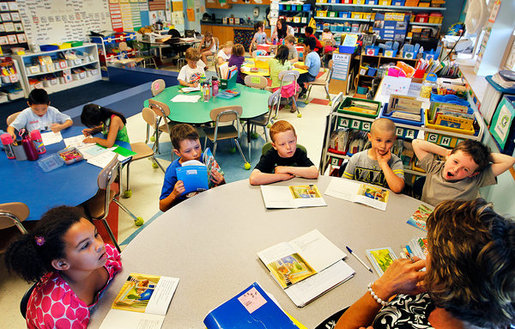Inclusive classrooms are essential for providing all students with a comprehensive education that meets their individual needs. Special education resource classrooms play a crucial role in supporting students with disabilities and ensuring they have access to the resources and accommodations they need to succeed. Incorporating the right essentials into these classrooms can make a significant difference in the learning experiences of students with special needs. Let's explore some key essentials for creating inclusive special education resource classrooms.
The Importance of Inclusive Classrooms
Inclusive classrooms are designed to accommodate students with a wide range of abilities, backgrounds, and learning styles. By creating a supportive and inclusive environment, educators can help all students reach their full potential and thrive academically, socially, and emotionally. Inclusive classrooms promote diversity, foster empathy and understanding among students, and prepare them for success in a diverse society.
Benefits of Inclusive Classrooms:
- Promote diversity and inclusion
- Foster empathy and understanding
- Enhance social and emotional development
- Prepare students for success in a diverse society
Essentials for Special Education Resource Classrooms
1. Assistive Technology
Assistive technology tools are essential for supporting students with disabilities in the classroom. These tools can help students access information, communicate effectively, and participate in classroom activities. Some common assistive technology tools include:
- Screen readers
- Speech-to-text software
- Graphic organizers
- Alternative keyboards and mice
2. Flexible Seating and Workstations
Flexible seating options and workstations can help create a comfortable and accessible learning environment for students with disabilities. Providing a variety of seating options, such as adjustable desks, stability balls, or bean bag chairs, can accommodate different physical needs and learning preferences.
3. Visual Aids and Supports
Visual aids and supports can help students with disabilities better understand and process information in the classroom. Some helpful visual aids include:
- Visual schedules
- Graphic organizers
- Picture symbols
- Color-coded materials
4. Communication Supports
Effective communication supports are essential for helping students with disabilities express themselves and communicate with their peers and teachers. Some common communication supports include:
- Augmentative and alternative communication (AAC) devices
- Picture communication boards
- Word or picture cards
- Sign language interpreters
5. Sensory Tools and Equipment
Many students with disabilities have sensory processing needs that can impact their learning experiences. Providing sensory tools and equipment, such as noise-canceling headphones, fidget toys, or sensory-friendly materials, can help create a sensory-friendly environment for students with sensory sensitivities.
6. Individualized Education Plans (IEPs)
Individualized Education Plans (IEPs) are essential documents that outline the specific goals, accommodations, and supports for students with disabilities. Special education resource classrooms should have access to students' IEPs to ensure that they are receiving the necessary accommodations and support to succeed academically.
Creating a Supportive and Inclusive Environment
In addition to incorporating essential resources and accommodations, creating a supportive and inclusive environment is key to the success of special education resource classrooms. Educators can take several steps to create a welcoming and inclusive classroom environment for students with disabilities:
Tips for Creating an Inclusive Classroom:
- Establish clear expectations and routines
- Encourage collaboration and peer support
- Provide opportunities for student choice and autonomy
- Offer feedback and positive reinforcement
- Build positive relationships with students and families
By incorporating essential resources, accommodations, and creating a supportive environment, educators can create inclusive special education resource classrooms that meet the diverse needs of all students and promote a culture of inclusion, respect, and support.


